The Enbridge pipeline project, proposed to transport crude oil across North America, has been met with strong opposition from environmental groups, indigenous communities, and concerned citizens. The project, which would create a 1,177-kilometer-long pipeline from Alberta to British Columbia, has raised concerns about environmental damage, oil spills, and the potential impact on local economies and communities. The "NO to Enbridge" movement has become a rallying cry for those who believe that this pipeline project represents a significant threat to our planet and the future of our world. In this article, we will explore the key issues surrounding the Enbridge pipeline project and the NO to Enbridge movement.
Introduction to the Enbridge Pipeline Project
The Enbridge Pipeline Project is a controversial oil pipeline proposal that would stretch 1,170 km from Alberta to British Columbia. The proposed pipeline, also known as the Northern Gateway Pipeline, has been met with significant opposition, sparking a movement against Enbridge and their projects.
Overview of the Project
The Northern Gateway Pipeline would transport up to 525,000 barrels of crude oil per day from Alberta's oil sands to a terminal on the coast of British Columbia. From there, the oil would be loaded onto tankers and shipped to Asia and other international markets.
History of Enbridge Pipeline Projects
Enbridge is no stranger to pipeline projects, having completed numerous oil and gas pipelines throughout Canada and the United States. However, these projects have not been without controversy, with Enbridge facing criticism and legal action for oil spills and environmental damage.
Environmental Concerns Associated with the Project
The Enbridge Pipeline Project has raised concerns about its potential impact on the environment, including wildlife and habitats, water quality, and the carbon footprint of oil pipelines.
Impact on Wildlife and Habitat
The proposed pipeline would cut through critical habitat for numerous species, including grizzly bears, caribou, and the iconic Spirit Bear. The potential for oil spills and other environmental damage has also raised concerns for marine life and migratory bird populations.
Threats to Water Quality and Ecosystems
The Enbridge Pipeline would cross over 770 waterways, including the Skeena and Fraser rivers, two of the most important salmon-bearing rivers in British Columbia. The risk of oil spills and leaks threaten the health of these ecosystems and the livelihoods of communities that rely on them.
The Carbon Footprint of Oil Pipelines
The Enbridge Pipeline would transport oil from the Alberta oil sands, one of the most carbon-intensive sources of oil in the world. The extraction and transportation of this oil would contribute to greenhouse gas emissions, exacerbating climate change and its impacts on the environment.
Economic Impact on the Affected Communities
Supporters of the Enbridge Pipeline argue that it would create jobs and economic benefits for local communities. However, opponents of the project point to a number of economic concerns surrounding the pipeline.
Impact on Tourism, Fishing, and Agricultural Industries
Many communities in British Columbia rely on tourism, fishing, and agriculture as their primary sources of income. The potential for environmental damage caused by the pipeline threatens to harm these industries, leaving local communities vulnerable.
Job Creation vs. Long-Term Economic Stability
While the pipeline may create jobs in the short-term, some argue that the long-term economic benefits of the project may be overstated. Relying on the volatile oil market for economic stability can lead to boom-and-bust cycles, leaving communities struggling when the market crashes.
Cost-Benefit Analysis for Local Communities
The potential risks and benefits of the Enbridge Pipeline must be weighed by impacted communities. The decision to support or oppose the pipeline should be based on a thorough cost-benefit analysis that takes into account the long-term economic, social, and environmental impacts.
Indigenous Perspectives and Opposition to the Project
The Enbridge Pipeline has been met with significant opposition from Indigenous communities along the proposed route. These communities have expressed concerns about the potential impacts on their land, water, and traditional ways of life.
Indigenous Sovereignty and Land Rights
The Enbridge Pipeline would cross over numerous Indigenous territories and violate their sovereignty and land rights. Indigenous communities have a right to free, prior, and informed consent when it comes to development projects that impact their territories.
Historical Trauma and the Legacy of Colonialism
Indigenous opposition to the Enbridge Pipeline is rooted in a legacy of colonialism and the ongoing impacts of historical trauma. Indigenous peoples have faced centuries of displacement, cultural genocide, and environmental racism, and the pipeline represents another assault on their rights and ways of life.
Challenges in Consultation and Reconciliation
The Canadian government has a legal obligation to consult with Indigenous communities on development projects that impact their territories. However, many Indigenous communities have criticized the government's approach to consultation, citing a lack of meaningful dialogue and a failure to respect Indigenous rights and perspectives.
Political Response to the NO to Enbridge Movement
The NO to Enbridge movement, which seeks to prevent the construction of Enbridge's Northern Gateway pipeline in British Columbia, has garnered significant political attention. Both federal and provincial governments have taken differing stances on the pipeline project, leading to more polarization in the pipeline debate.
Governmental Stances on the Pipeline Project
The federal government, led by Prime Minister Justin Trudeau, has indicated that it will not support the pipeline project due to the potential environmental risks involved. However, the provincial government of British Columbia, led by Premier Christy Clark, has expressed support for the pipeline as a means of creating jobs and boosting the economy.
Political Polarization and the Pipeline Debate
The debate over the Northern Gateway pipeline has led to increased political polarization, with some parties taking a hardline stance on either side of the issue. Environmental groups and Indigenous communities have been vocal in their opposition to the project, while supporters argue that the pipeline would bring economic benefits to the region.
The Role of Political Lobbying and Activism
Political lobbying and activism have played a significant role in the NO to Enbridge movement. Environmental groups and Indigenous communities have worked together to raise awareness about the potential environmental risks associated with the pipeline project, and have put pressure on both federal and provincial governments to reject the proposal.
The Role of Civil Societies and Grassroots Activism
The NO to Enbridge movement is largely a grassroots movement led by community members and civil societies who are passionate about protecting the environment and preserving Indigenous rights.
Community-led Movements and Protests
Local communities and civil societies have organized protests, rallies, and marches to raise awareness about the potential dangers of the pipeline project. These grassroots movements have been instrumental in building support for the NO to Enbridge movement.
Importance of Public Engagement and Awareness
Public engagement and awareness are critical components of the NO to Enbridge movement. By educating the public about the potential environmental risks associated with the pipeline project, community members and civil societies are able to build support for their cause and encourage government officials to reject the proposal.
Collaboration between Local and Global Environmental Groups
The NO to Enbridge movement has also seen collaboration between local and global environmental groups. Organizations such as Greenpeace, Sierra Club, and Rainforest Action Network have worked with local communities and civil societies to build support for the movement and push for a more sustainable future.
Future Implications and the Fight for a Sustainable Future
The NO to Enbridge movement has far-reaching implications for the future of sustainable energy production and the fight against climate change.
Alternative Solutions for Energy Production
The NO to Enbridge movement has sparked discussions about alternative solutions for energy production. Renewable energy technologies such as wind and solar have become more viable options for meeting the energy needs of communities without the environmental risks associated with fossil fuels.
Climate Change and the Future of Fossil Fuels
The NO to Enbridge movement is part of a larger push for a more sustainable future and the transition away from fossil fuels. Climate change is a global issue that requires a collective effort from governments, businesses, and communities to address.
Impacts on Future Generations
The NO to Enbridge movement is motivated by the desire to protect the environment and preserve it for future generations. The potential environmental risks associated with the pipeline project would have long-lasting impacts on the ecosystem and the communities that rely on it.
Conclusion and Call to Action
The NO to Enbridge movement is a grassroots movement that represents the collective effort of communities and civil societies to protect the environment and preserve Indigenous rights. It is important to continue advocating for more sustainable energy production and taking action against environmental risks.
The Importance of Continued Activism
Continued activism is crucial to the success of the NO to Enbridge movement and the larger push for a more sustainable future. Community members and civil societies must continue to organize protests, engage in public awareness campaigns, and put pressure on governments to prioritize environmental protection.
Ways to Get Involved and Make a Difference
Individuals can get involved in the NO to Enbridge movement and other environmental movements by joining local environmental groups and participating in local events and campaigns. Additionally, making environmentally conscious choices in daily life can also make a difference.
The Future of Environmental Movements and Sustainability
The NO to Enbridge movement is part of a larger global push for a more sustainable future. Environmental movements must continue to advocate for policy changes, push for renewable energy technologies, and educate the public about the importance of protecting the environment for future generations.In conclusion, the NO to Enbridge movement has brought together concerned citizens, environmental groups, and indigenous communities to oppose the proposed pipeline project. Despite the challenges, this movement has shown that people's voices can make a difference in shaping the future of our planet. As we move forward, it is important to continue the fight for a sustainable future, to advocate for alternative solutions, and to hold our governments and corporations accountable. By working together, we can create a world where our natural resources are protected, and our planet is preserved for future generations.
FAQ
What is the Enbridge pipeline project?
The Enbridge pipeline project is a proposed pipeline that would transport crude oil from Alberta to British Columbia. The project would create a 1,177-kilometer-long pipeline and has raised concerns about environmental damage, oil spills, and the potential impact on local economies and communities.
Why is the NO to Enbridge movement important?
The NO to Enbridge movement is important because it represents a significant threat to our planet and the future of our world. The movement has brought together concerned citizens, environmental groups, and indigenous communities to oppose the proposed pipeline project.
What are some of the environmental concerns associated with the Enbridge pipeline project?
The environmental concerns associated with the Enbridge pipeline project include the impact on wildlife and habitat, threats to water quality and ecosystems, and the carbon footprint of oil pipelines. The project has the potential to cause significant harm to the environment and could have long-term consequences for our planet.
What can I do to get involved in the NO to Enbridge movement?
There are many ways to get involved in the NO to Enbridge movement, including attending protests and rallies, signing petitions, and contacting your local representatives. You can also support environmental groups and indigenous communities who are fighting against the pipeline project. By working together, we can make a difference in shaping the future of our planet.
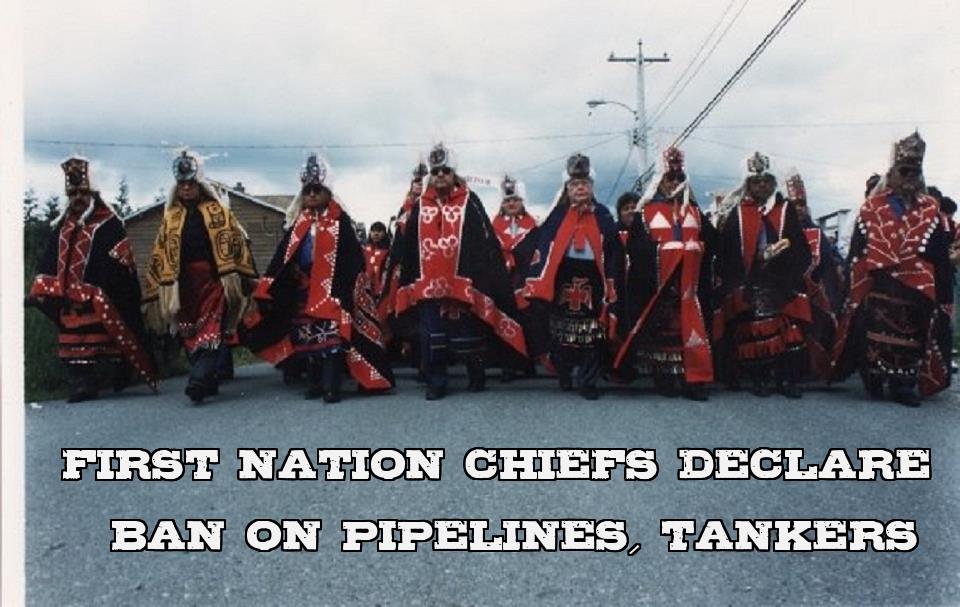 Risking it All - Oil on our Coast from Twyla Roscovich on Vimeo.
Risking it All - Oil on our Coast from Twyla Roscovich on Vimeo.
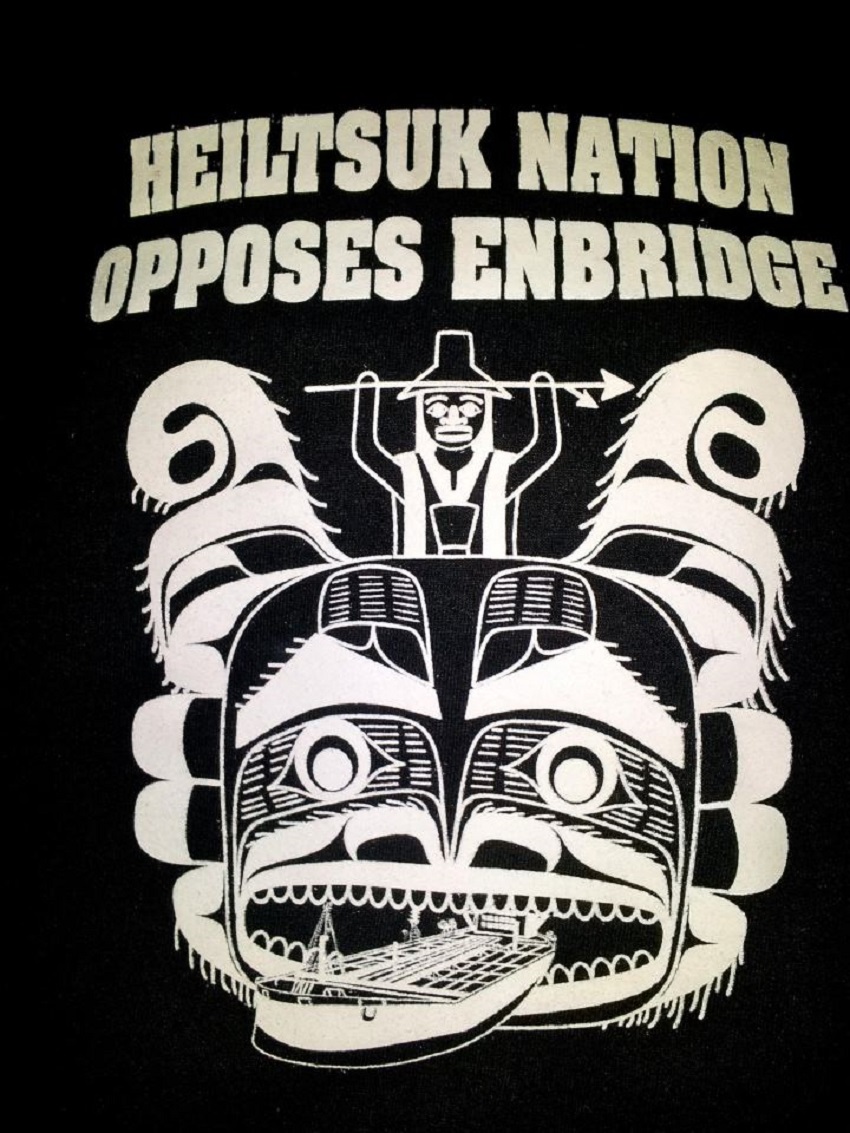
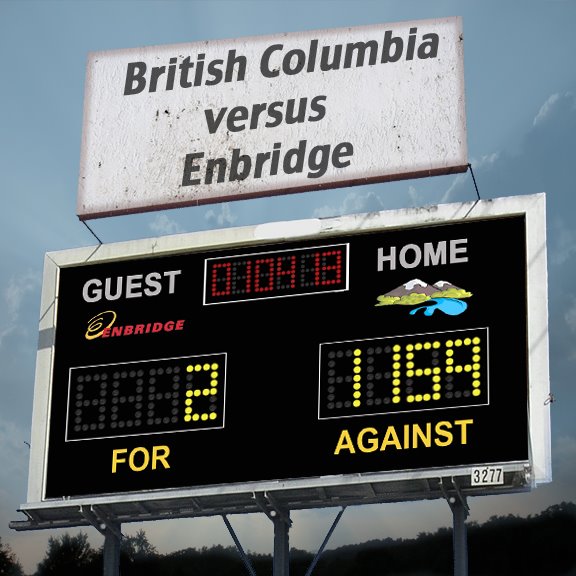
... Say no to Enbridge Pipeline & Tankers ...
Protect 'Mother Earth' at all costs!
www.ReamusWilson.com
Here's a great take action site:
http://www.pacificwild.org/site/take_action/enbridge-tankers.html
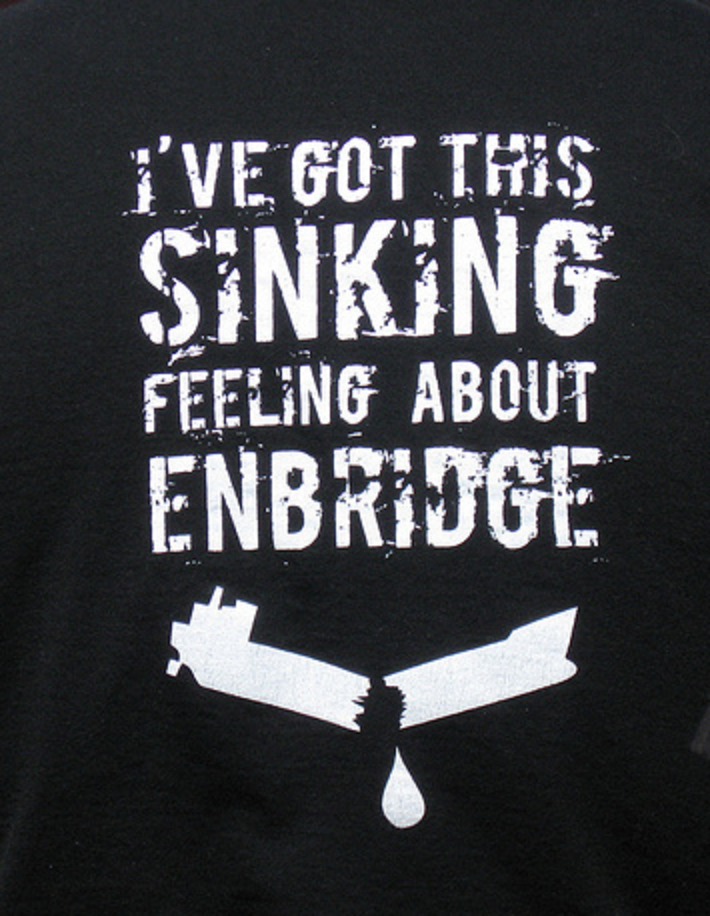
First Nations lead the fight against Enbridge’s $5.5 billion Northern Gateway Project.
On December 7, all opposition parties in the House of Commons united to pass a motion requesting an immediate legislative ban on oil tanker traffic in Dixon Entrance, Hecate Strait and Queen Charlotte Sound. On December 14, a bill providing that legislation was tabled in the House of Commons.
The parliamentary bill follows hot on the heels of a declaration by 61 First Nations opposing the Enbridge Northern Gateway Project—a $5.5 billion, 1,170-kilometre pipeline designed to carry 114 million litres of crude oil per day to the port of Kitimat from Bruderheim in Alberta, and smaller amounts of condensates back in the other direction (condensates thin the crude enough to make it flow). The pipelines would pass through 50 First Nation territories directly, crossing 800 streams and rivers, including tributaries of the Fraser. Once the oil reaches Kitimat, it would be piped into one of the 225 bulk crude oil tankers anticipated per year to travel down Douglas Channel past some of the most rugged, rocky coastline anywhere in the world and then west through Hecate Strait to Asia.
So the tankers and the pipeline are related—even dependent on each other. If tankers are banned, the pipeline would lose its raison d’etre. And vice versa. And there is good reason to fear both. Over the last decade, other Enbridge pipelines have released 21 million litres of raw hydrocarbons in 610 spills, including the latest leakage of nearly four million litres into the Kalamazoo River in Michigan.
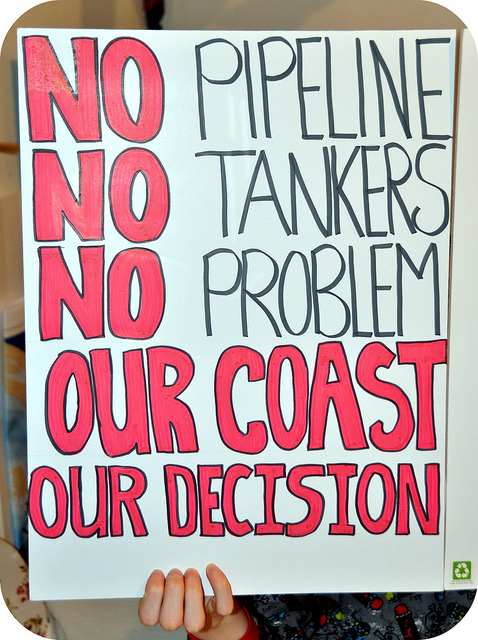
The historic alliance of 61 First Nations to protect the Fraser River watershed builds on an earlier declaration by coastal First Nations of their opposition to the project, plus a 2006 court challenge to Enbridge’s plans by the Carrier Sekani Tribal Council—more than half the pipeline runs through their territories.
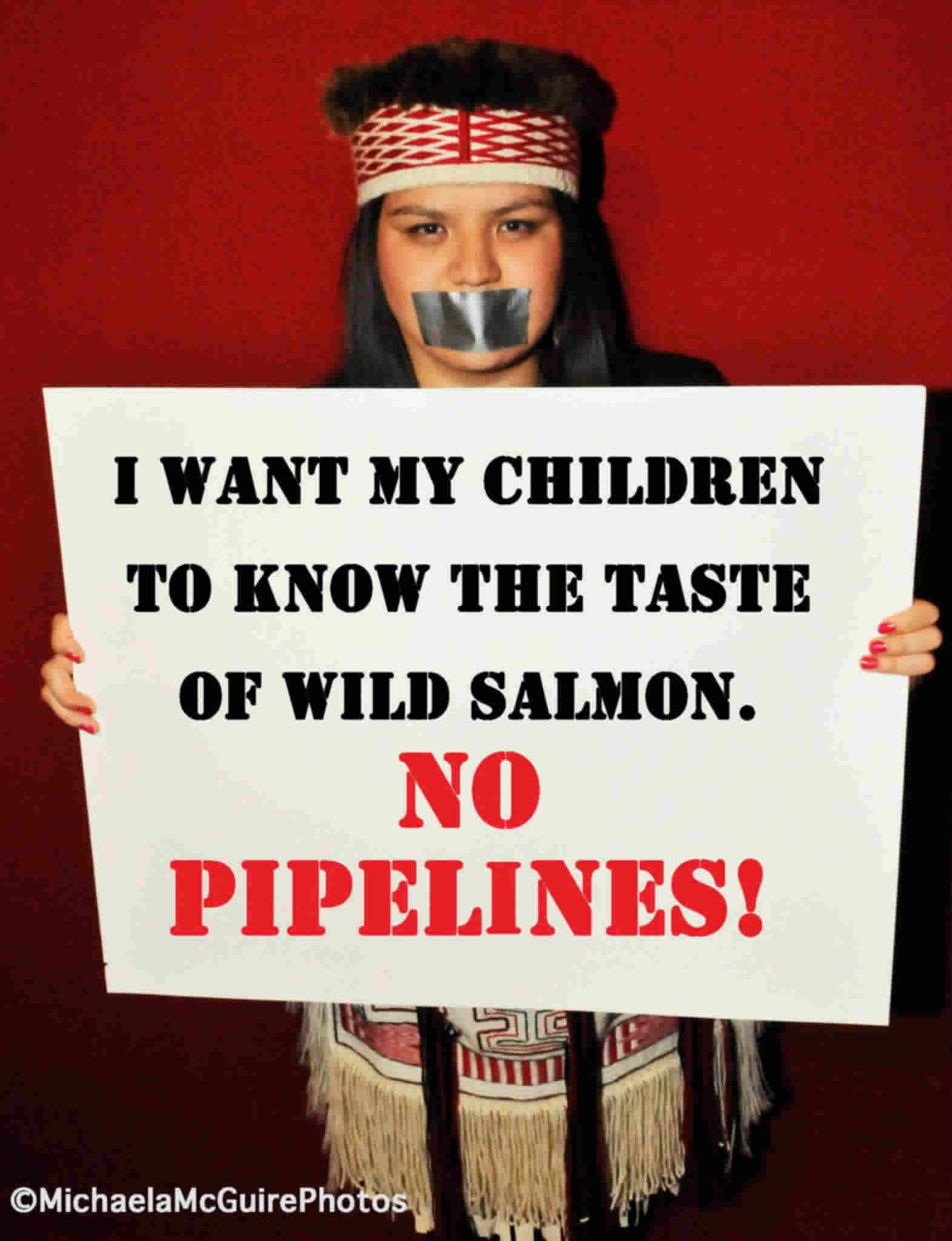
First Nations are joined in their opposition by the Union of BC Municipalities, which has passed a resolution calling for a legislated ban on oil tankers off the central coast and the transport of crude oil through the proposed Enbridge pipeline. Last September, at the kickoff of the Joint Review Panel process set up to evaluate Enbridge’s plans, overwhelming opposition to the project was voiced by many others. Concerns ranged from the impacts of the project to the process of the Review Panel itself, citing: The bias of the panel, the limitations of questions allowed, and the lack of detail on cultural and environmental impacts (from storm frequency to landslide impacts). Most recently, a new report of the Pembina Institute says Enbridge’s application is flawed in suggesting a need for more pipeline when there is actually an overcapacity.
So the tally of those opposed to the oil pipeline and tankers now includes all the federal and provincial opposition parties, all the First Nations directly and indirectly affected, unions including the United Fisherman and Allied Workers, local, provincial and national environmental and stewardship groups, and, according to all polls and petitions conducted on the subject, the vast majority of Canadian citizens.
But it isn’t over yet.
Besides passing legislation through the Conservative-dominated Senate, there are two more years of the Joint Review Panel process left if Enbridge doesn’t withdraw its application. And Enbridge shows no signs of doing so.
Enbridge also isn’t without friends in high places. A recently set up website by the “Enbridge Northern Gateway Alliance” defends the project on the basis of economic opportunities and jobs. Described as a “community coalition established to support the regulatory review of the Northern Gateway project,” the alliance’s chair is Colin Kinsley, the ex-mayor of Prince George, who has spent his entire career in the oil and gas industry (and is presently making a bid for the federal Conservative candidacy). There are eight other individuals listed as “alliance leaders” on the website, including the present mayors of Prince George and Mackenzie, and past and present CEOs of the BC Chamber of Commerce, but there is no additional information on the membership or funding of the organization. (Kinsley didn’t return phone calls.)
And then there’s the Joint Review Panel (of the National Energy Board and Canadian Environmental Assessment Agency) itself, whose three-person panel includes a biologist with an environmental consulting firm tied to the oil patch out of Calgary; a lawyer and senior executive out of the energy sector, also from Calgary; and a geologist from Ontario. None of these people have any experience with the unique cultural and ecological values of British Columbia.
Still, the united First Nations are a force to be reckoned with. The 2006 legal challenge by Carrier Sekani Tribal Council caused the initial application of Enbridge to be withdrawn. Vice Chief Terry Teegee said that should the Joint Review Panel come down in favour of Enbridge then they would reissue their legal challenge or join in a class action suit with other First Nations.
Mike Ridsdale of the Office for the Wet’suwet’en—10 percent of the pipeline would run through their territory—echoed their intentions to challenge the project.
And there’s another legal case unfolding that could provide additional weight. Xeni Gwet’in councillor Roger Williams reports that the landmark 2007 court ruling that granted aboriginal title to Xeni Gwet’in land (not just rights and resources) and was appealed by the province, has now finished the appeal process. If the appeal is denied (a decision is expected this spring), Williams says the Xeni Gwet’in will be in a position to constitutionally challenge Enbridge. The recent rejection of Taseko’s Prosperity Mine at Fish Lake by the federal minister of environment indicates the aboriginal title case is beginning to influence resource outcomes. In relation to this decision, Tsilhqot’in National Government’s Chief Joseph Alphonse stated: “First Nations also want good jobs for our people and a future for our children and we want them to prosper, but we do not want to destroy our environment, values and future generations to achieve this.”
Tackling the investors has also been part of First Nations strategy. Last spring, Carrier Sekani Vice Chief Teegee told shareholders of the Royal Bank of Canada, one of the biggest investors in the tarsands and Enbridge, that his tribal council do not want the pipeline. RBC has subsequently drafted a policy requiring “free, prior and informed consent” by First Nations as a precondition for financing, following Canada’s signing the UN Declaration for Aboriginal Rights. If the draft policy passes, according to Teegee, it further undermines Enbridge financing, already weakened by the pull out of PetroChina after the first Carrier Sekani court challenge.
Stories about the reception of Enbridge in communities abound: Haida Gwaii First Nation and non-native communities have joined together in feasts where they pour oil over their seafood in symbolic rejection of the project; the Heiltsuk First Nation in Waglisla (Bella Bella) invited Enbridge to a day of traditional dance, song and discussion with the Hemas (traditional chiefs) on the cultural and ecological impacts of an oil spill; a Kitimat City Councillor stepped down from the Enbridge Community Advisory Board, calling the process a “sham.”
In such ways, First Nations have taken a leadership role in the battle against tankers and pipelines to our northern coast.
We on the southern coast will need to heed their lessons and tactics—ironically, especially if the Enbridge pipeline is denied the go-ahead.
Kinder Morgan, which has been shipping heavy crude oil out of its Westbridge Terminal in Burnaby, is hoping to grab the share of the market that will be created if the Enbridge project fails. Already Kinder Morgan is shipping 20,000 barrels per day out of Vancouver and, according to the petro-magazine Petroleum Economist in November, Kinder Morgan is ramping up on their “undeclared ambitions” to expand the Vancouver shipments. They’ve upgraded their pipelines to increase their capacity to a around 300,000 barrels per day.
What this means for us in Victoria and nearby communities is a tanker traffic disaster waiting to happen in our own waters. One tanker incident in the Salish Sea could release 700,000 barrels which, according to some oil spill modelling forecasts, would spread within eight days to the entire coastline of the Salish Sea and devastate our marine and shoreline habitats. They anticipate a rise in tanker traffic to the same scales as the northern proposal.
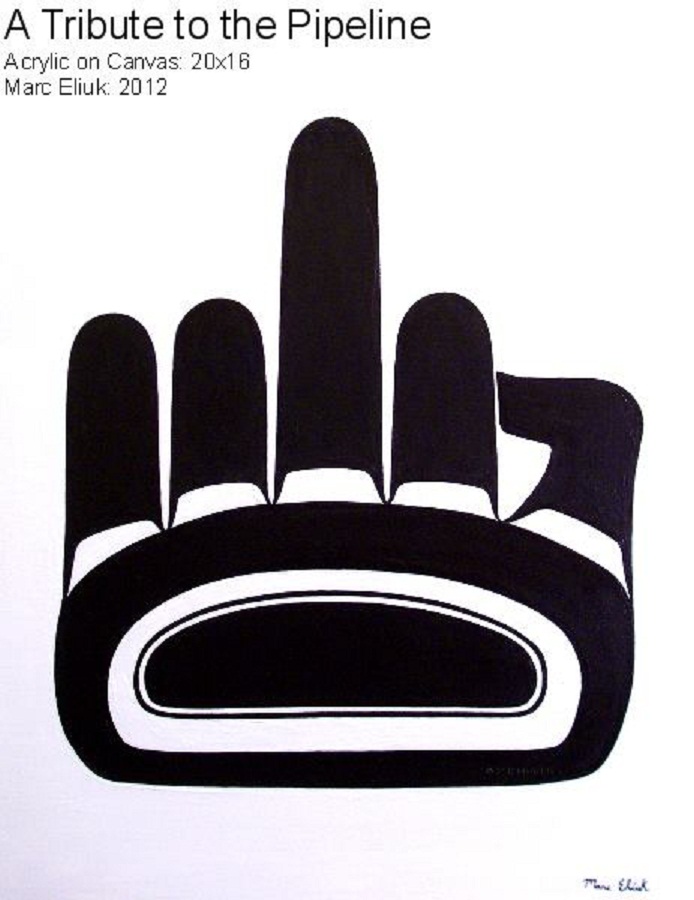 www.notanks.org
www.notanks.orgA new organization, , with Greenpeacer founder Rex Wyler at the helm, has started a campaign and watchdog group on Kinder Morgan’s acceleration of tanker traffic out of Burnaby. (Remember the pipeline leak in 2007 in Burnaby? That was the Kinder Morgan pipeline.) Pamela Anderson lent her star power last month to the issue, walking the shores of her hometown Ladysmith in a video warning the public of the impacts of a southern spill.
Southern communities need to take some cues from our northern neighbours and start to consolidate a position around a Kinder Morgan expansion that would affect our waters. The leadership on oil issues in the 21st century has come overwhelmingly from the First Nations so that should be the first place to support and look for guidance.
From her home on Salt Spring Island, Briony Penn can see the increased oil tanker traffic moving down Boundary Pass, through the southern Gulf Islands National Park and into Haro Strait, the prime summer feeding habitat of the endangered southern Orca resident whales.
Retrieved from:
http://focusonline.ca/?q=node/160
Please add relevant material in the comment section below any page on this site.
http://www.pipeupagainstenbridge.ca/ https://www.facebook.com/pipeupagainstenbridge http://pacificwild.org/site/take_action/enbridge-tankers.html http://bcspiritbear.com/no-enbridge-pipeline/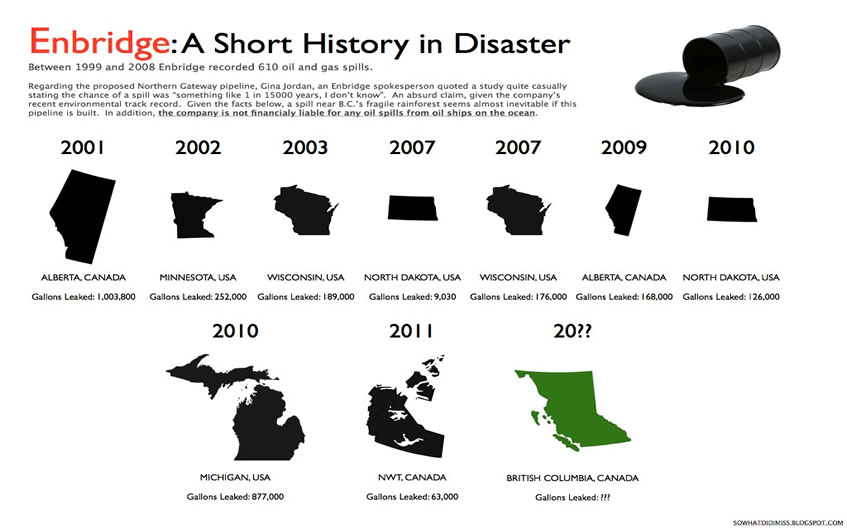 2000: 7,513 barrels. Enbridge reported 48 pipeline spills and leaks, including a spill of 1,500 barrels at Innes, Sask.
2000: 7,513 barrels. Enbridge reported 48 pipeline spills and leaks, including a spill of 1,500 barrels at Innes, Sask.
2001: 25,980 barrels. Enbridge pipelines reported 34 spills and leaks, totalling 25,980 barrels of oil, including a January spill from Enbridge's Energy Transportation North Pipeline that leaked 23,900 barrels of crude oil into a slough near Hardisty, Alberta, and a September spill of 598 barrels in Binbrook, Ont.
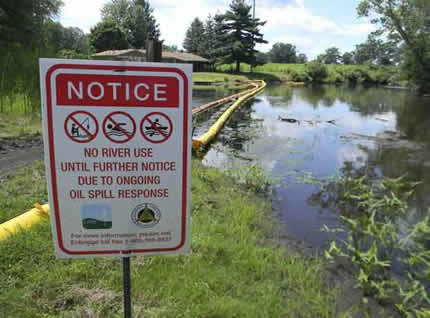
2002: 14,683 barrels. Enbridge reported 48 oil spills and leaks, totalling 14,683 barrels, including a leak of 6,133 barrels in Kerrobert, Sask. in January; a seam failure in May that spilled 598 barrels in Glenboro, Man.; and a pipeline rupture into a marsh west of Cohasset, Minn. To prevent 6,000 barrels of crude oil from reaching the Mississippi River, Enbridge set the oil on fire.
2003: 6,410 barrels. Enbridge pipelines had 62 spills and leaks, totalling 6,410 barrels, including a January spill of 4,500 barrels of oil at the company's oil terminal near Superior, Wisc., and a June spill of 452 barrels of oil into Wisconsin's Nemadji River. In April, an Enbridge gas pipeline exploded, levelling a strip mall in Etobicoke, Ont. and killing seven people.
2004: 3,252 barrels. Enbridge pipelines had 69 reported spills, totalling 3,252 barrels of oil, including a February valve failure in Fort McMurray, Alta. that leaked 735 barrels of oil.
2005: 9,825 barrels. Enbridge had 70 reported spills, totalling 9,825 barrels of oil.
2006: 5,363 barrels. Enbridge had 61 reported spills, totalling 5,363 barrels of oil, including a March 613 barrel spill at its Willmar terminal in Saskatchewan and a December spill of 2,000 barrels at a pumping station in Montana.
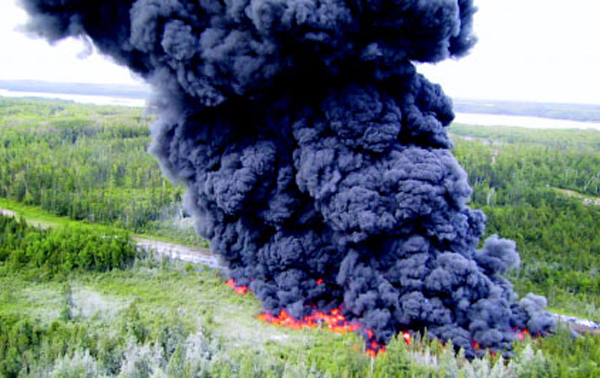
2007: 13,777 barrels. Enbridge had 65 spills and leaks, totalling 13,777 barrels of oil, including a January pipeline break near Stanley, North Dakota, which spilled 215 barrels of oil; two pipeline incidents in January/February in Clark and Rusk Counties in Wisconsin which spilled 4,200 barrels of oil; and an April spill of approximately 6,227 barrels of oil into a field down-stream of an Enbridge pumping station at Glenavon, Sask. In November, an Enbridge pipeline carrying bitumen to U.S. Midwest markets exploded near Clearbrook, Minn., killing two workers.
2008: 2,682 barrels. Enbridge had 80 reported spills and leaks, totalling 2,682 barrels of oil, including a January incident at an Enbridge pumping station at the Cromer Terminal in Manitoba that leaked 629 barrels of crude; a February incident in Weyburn, Sask., which leaked 157 barrels; and a March spill of 252 barrels of oil in Fort McMurray, Alberta.
2009: 8,441 barrels. Enbridge had 103 reported oil spills and leaks, totalling 8,441 barrels, including a pipeline incident at the Enbridge Cheecham Terminal tank farm that spilled 5,749 barrels of oil near Anzac, Alberta; a spill of 704 barrels in Kisbey, Sask.; and a spill of 1,100 barrels at Odessa, Sask.
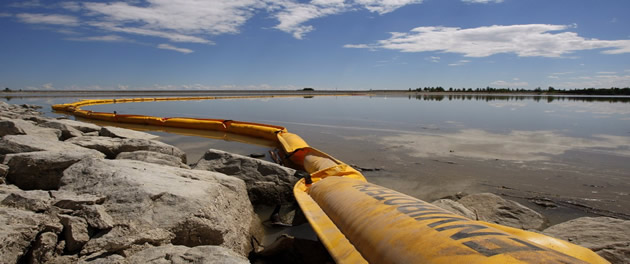
2010: 34,122 barrels. Enbridge had 80 reported pipeline spills, totalling 34,122 barrels, including a January Enbridge pipeline leak near Neche, North Dakota of 3,000 barrels of oil; an April incident near Virden, Man. that leaked 12 barrels of oil into Bosshill Creek; a July pipeline spill in Marshall, Michigan that dumped 20,000 barrels of tar sands crude into the Kalamazoo River, causing the biggest oil spill in U.S. Midwest history; and a September pipeline spill of 6,100 barrels in Romeoville, Ill.
Total: 132,715 barrels of oil, more than half the Exxon Valdez spill of 257,000 barrels
Sources: Prince George Citizen (March 12, 2010); The Polaris Institute (May 2010); The Tyee (31 July 2010); Reuters (Sept. 10, 2010); Enbridge.com 2010; Vancouver Sun (May 10, 2011); The Globe & Mail (June 17, 2011); Dogwood Initiative
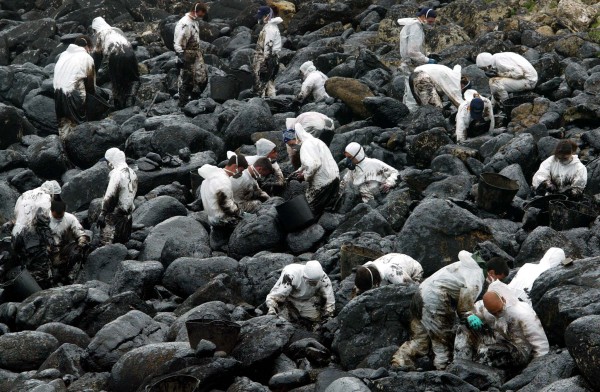
A Decade of Enbridge Oil Pipeline Spills
by Joyce Nelson,

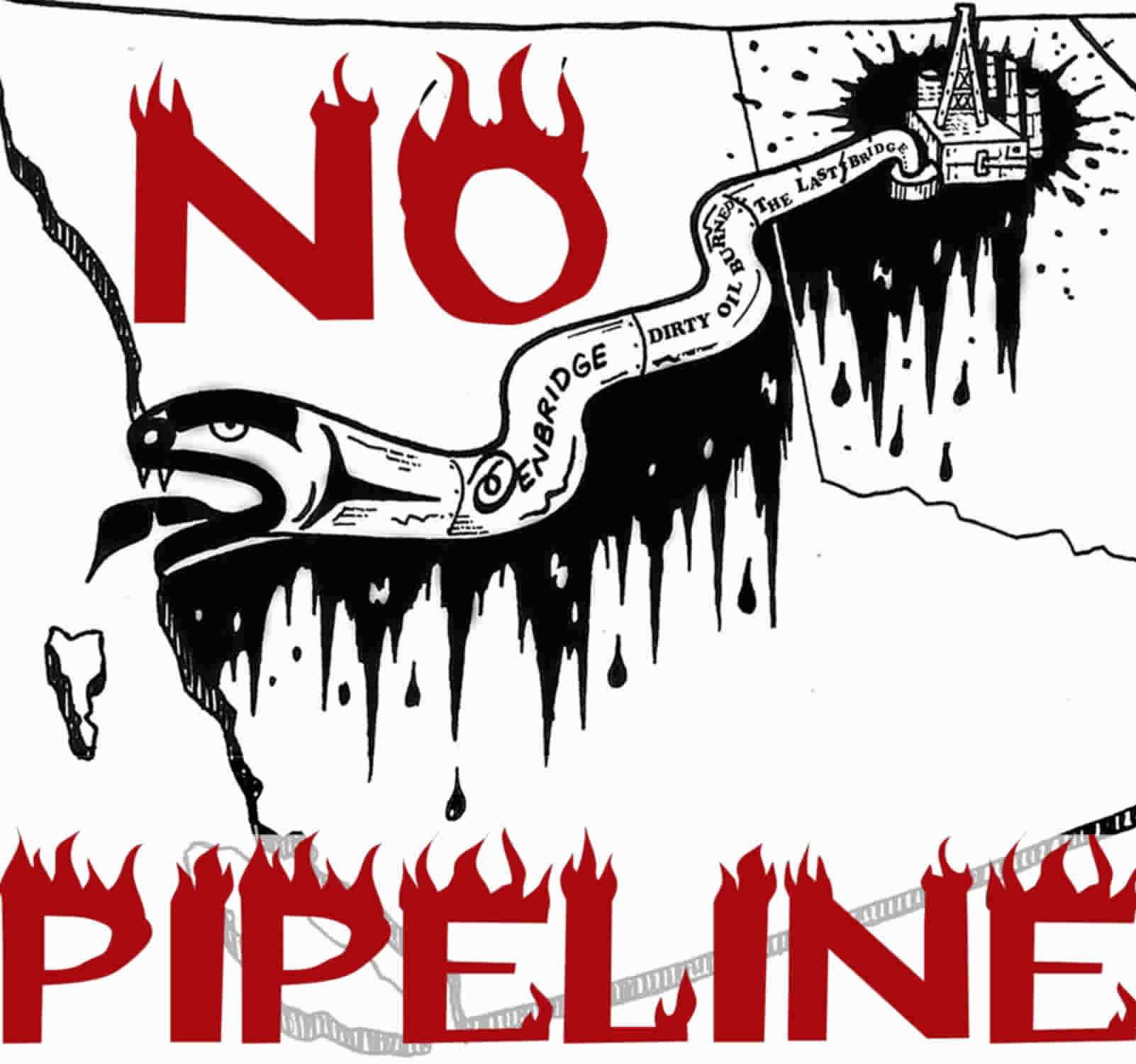
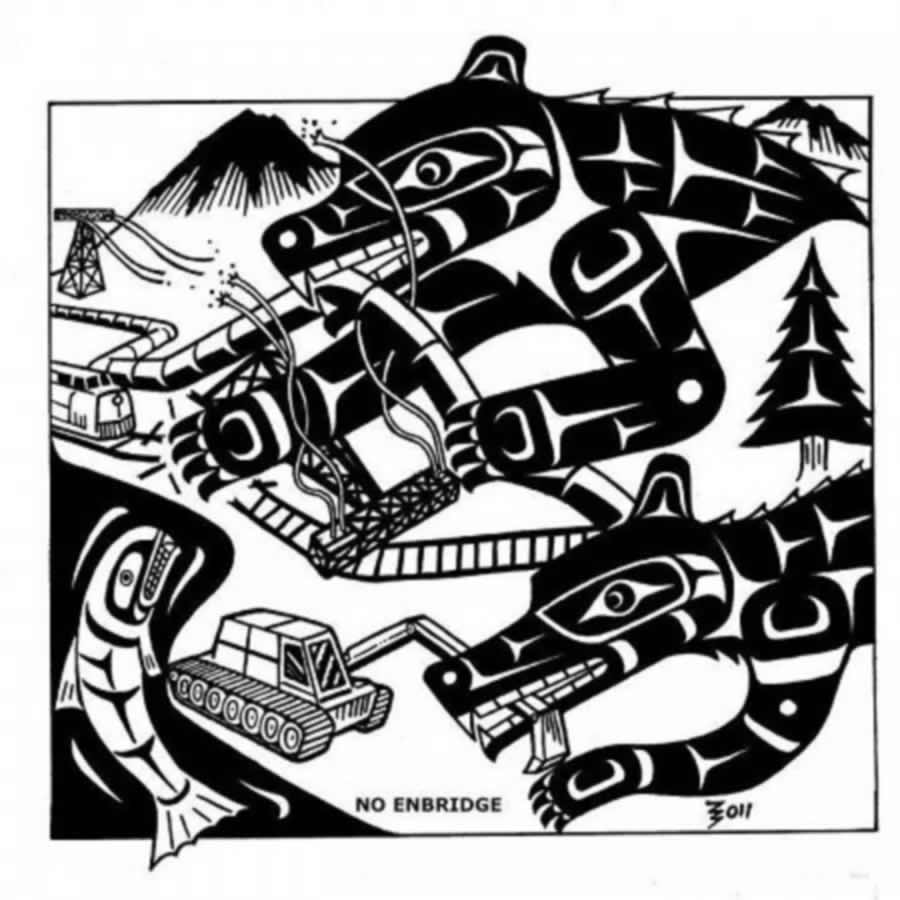
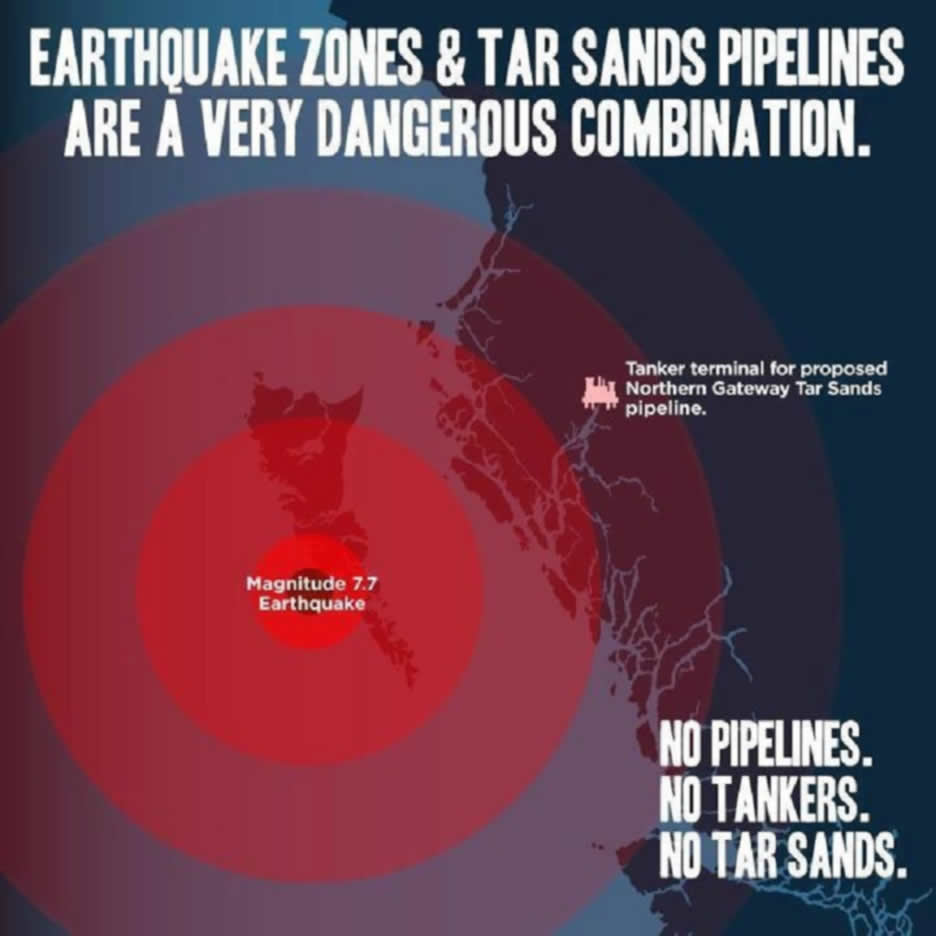
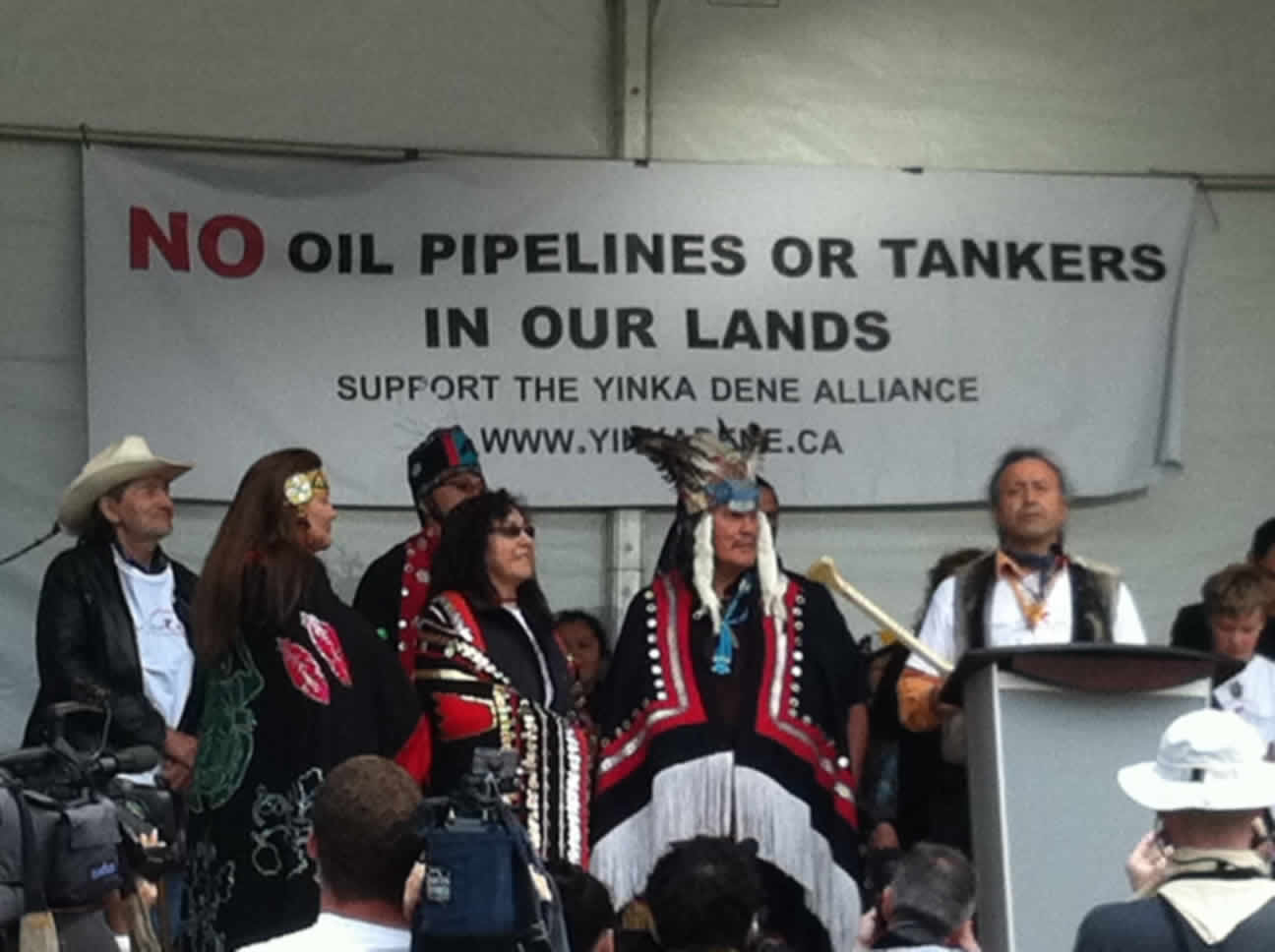

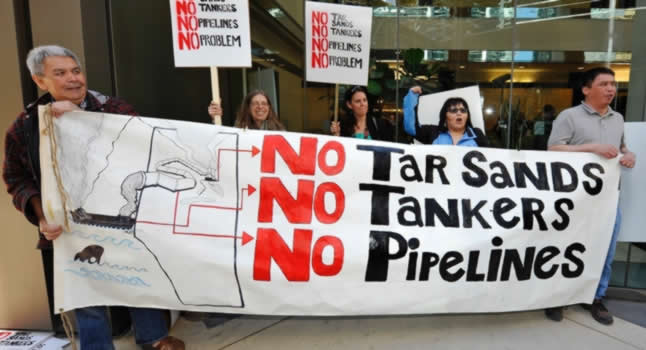
Please add relevant material in the comment section below any page on this site.